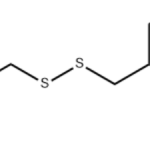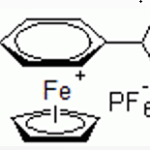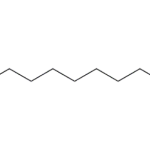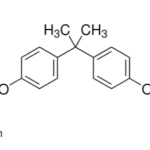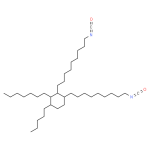
- Identification
- Properties
- Safety Data
- Specifications & Other Information
- Links
- Quick Inquiry
Identification
CAS Number
37064-30-5
Name
Procyanidin C1
Synonyms
(2R,2’R,2”R,3R,3’R,3”R,4R,4’S)-2,2′,2”-Tris(3,4-dihydroxyphenyl)-3,3′,3”,4,4′,4”-hexahydro-2H,2’H,2”H-4,8′:4′,8”-terchromen-3,3′,3”,5,5′,5”,7,7′,7”-nonol [German] [ACD/IUPAC Name]
(2R,2’R,2”R,3R,3’R,3”R,4R,4’S)-2,2′,2”-Tris(3,4-dihydroxyphenyl)-3,3′,3”,4,4′,4”-hexahydro-2H,2’H,2”H-4,8′:4′,8”-terchromene-3,3′,3”,5,5′,5”,7,7′,7”-nonol [ACD/IUPAC Name]
(2R,2’R,2”R,3R,3’R,3”R,4R,4’S)-2,2′,2”-Tris(3,4-dihydroxyphényl)-3,3′,3”,4,4′,4”-hexahydro-2H,2’H,2”H-4,8′:4′,8”-terchromène-3,3′,3”,5,5′,5”,7,7′,7”-nonol [French] [ACD/IUPAC Name]
[4,8′:4′,8”-Ter-2H-1-benzopyran]-3,3′,3”,5,5′,5”,7,7′,7”-nonol, 2,2′,2”-tris(3,4-dihydroxyphenyl)-3,3′,3”,4,4′,4”-hexahydro-, (2R,2’R,2”R,3R,3’R,3”R,4R,4’S)- [ACD/Index Name]
37064-30-5 [RN]
Procyanidin C1 [Wiki]
(2R,?2’R,?2”R,?3R,?3’R,?3”R,?4R,?4’S)?-2,?2′,?2”-?tris(3,?4-?dihydroxyphenyl)?-?3,?3′,?3”,?4,?4′,?4”-?hexahydro-[4,?8′:4′,?8”-?Ter-?2H-?1-?benzopyran]?-?3,?3′,?3”,?5,?5′,?5”,?7,?7′,?7”-?nonol ?
(2R,2’R,2”R,3R,3’R,3”R,4R,4’S)-2,2′,2”-Tris(3,4-dihydroxyphenyl)-[4,8′:4′,8”-terchroman]-3,3′,3”,5,5′,5”,7,7′,7”-nonaol
(2R,2’R,2”R,3R,3’R,3”R,4R,4’S)-2,2′,2”-tris(3,4-dihydroxyphenyl)-3,3′,3”,4,4′,4”-hexahydro-[4,8′:4′,8”-ter-2H-1-benzopyran]-3,3′,3”,5,5′,5”,7,7′,7”-nonol
(2R,3R,4R,2’R,3’R,4’S,2”R,3”R)-2,2′,2”-Tris-(3,4-dihydroxy-phenyl)-3,4,3′,4′,3”,4”-hexahydro-2H,2’H,2”H-[4,8′;4′,8”]terchromene-3,5,7,3′,5′,7′,3”,5”,7”-nonaol
(2R,3R,4S)-2-(3,4-dihydroxyphenyl)-4-[(2R,3R)-2-(3,4-dihydroxyphenyl)-3,5,7-trihydroxy-3,4-dihydro-2H-chromen-8-yl]-8-[(2R,3R,4R)-2-(3,4-dihydroxyphenyl)-3,5,7-trihydroxy-3,4-dihydro-2H-chromen-4-yl]-3,4-dihydro-2H-chromene-3,5,7-triol
(2R,3R,4S)-2-(3,4-dihydroxyphenyl)-8-[(2R,3R,4R)-2-(3,4-dihydroxyphenyl)-3,5,7-trihydroxy-3,4-dihydro-2H-1-benzopyran-4-yl]-4-[(2R,3R)-2-(3,4-dihydroxyphenyl)-3,5,7-trihydroxy-3,4-dihydro-2H-1-benzopyran-8-yl]-3,4-dihydro-2H-1-benzopyran-3,5,7-triol
(4,8′:4′,8”-Ter-2H-1-benzopyran)-3,3′,3”,5,5′,5”,7,7′,7”-nonol, 2,2′,2”-tris(3,4-dihydroxyphenyl)-3,3′,3”,4,4′,4”-hexahydro-, stereoisomer
[Epicatechin(4b->8)]2-epicatechin
[Epicatechin-(4β->8)]2-epicatechin
4′,8”]terchromene-3,5,7,3′,5′,7′,3”,5”,7”-nonaol
65085-09-8 [RN]
CHEMBL290632
Cinnamtannin A1
EC-(4b,8)-EC-(4b,8)-EC
Epicatechin-(4β->;8)-epicatechin-(4β->8)-epicatechin
Epicatechin-(4β – >8)epicatechin-(4β – >8)epicatechin
Epicatechin-(4β – 8)epicatechin-(4β – 8)epicatechin
https://www.ebi.ac.uk/chembl/compoundreportcard/CHEMBL290632/
MFCD01682743
Proanthocyanidin C1
Procyanidin [Wiki]
Procyanidin trimer C1
Procyanidol C1
SMILES
c1cc(c(cc1[C@@H]2[C@@H](Cc3c(cc(c(c3O2)[C@H]4c5c(cc(c(c5O[C@@H]([C@@H]4O)c6ccc(c(c6)O)O)[C@H]7c8c(cc(cc8O[C@@H]([C@@H]7O)c9ccc(c(c9)O)O)O)O)O)O)O)O)O)O)O
StdInChI
InChI=1S/C45H38O18/c46-18-10-27(54)33-32(11-18)61-42(16-2-5-21(48)25(52)8-16)39(59)37(33)35-29(56)14-30(57)36-38(40(60)43(63-45(35)36)17-3-6-22(49)26(53)9-17)34-28(55)13-23(50)19-12-31(58)41(62-44(19)34)15-1-4-20(47)24(51)7-15/h1-11,13-14,31,37-43,46-60H,12H2/t31-,37-,38+,39-,40-,41-,42-,43-/m1/s1
StdInChIKey
MOJZMWJRUKIQGL-XILRTYJMSA-N
Molecular Formula
C45H38O18
Molecular Weight
866.772
Properties
Appearance
Brown powder
Safety Data
Symbol
WGK Germany
3
MSDS Download
Specifications and Other Information of Our
Identification Methods
Purity
Shelf Life
2 years
Storage
Under room temperature away from light
Known Application
Procyanidin C1 CAS 37064-30-5, a complex polyphenolic compound, falls under the larger category of proanthocyanidins which are widely recognized for their potent antioxidant properties. These substances are found in a variety of plants, including fruits, vegetables, nuts, seeds, and bark, playing crucial roles in plant defense mechanisms against pathogens and environmental stressors. Among the diverse array of proanthocyanidins, Procyanidin C1 is particularly notable for its unique structure and significant health-promoting potentials.
Chemically, Procyanidin C1 is a trimer, meaning it consists of three flavonoid units linked together. This structural complexity contributes to its strong antioxidant capacity, surpassing that of simpler flavonoids and even some vitamins known for their antioxidant properties, such as vitamin E and C. The antioxidant activity of Procyanidin C1 is essential in neutralizing free radicals, unstable molecules that can cause oxidative stress leading to cellular damage, aging, and various diseases.
The health benefits associated with Procyanidin C1 are vast and have been the subject of numerous scientific studies. Research has shown that it can support cardiovascular health by improving blood circulation, reducing blood pressure, and preventing the oxidation of low-density lipoprotein (LDL) cholesterol, a key factor in the development of atherosclerosis. Moreover, its anti-inflammatory effects are crucial in mitigating chronic inflammation, a root cause of many chronic conditions, including cancer, diabetes, and neurodegenerative diseases.
In addition to its cardiovascular and anti-inflammatory benefits, Procyanidin C1 has been explored for its potential in cancer prevention and therapy. Its ability to induce apoptosis (programmed cell death) in cancer cells, inhibit tumor growth, and prevent the spread of cancer cells highlights its potential as an adjunct to conventional cancer treatments.
Despite the promising health benefits, the bioavailability of Procyanidin C1, like other polyphenols, is relatively low, which means that the body may not absorb or utilize these compounds efficiently when consumed through diet alone. Ongoing research is focused on improving the delivery methods and bioavailability of Procyanidin C1 to maximize its health benefits.
In conclusion, Procyanidin C1 represents a significant area of interest within the field of nutritional science and pharmacology due to its strong antioxidant capacity and potential therapeutic benefits. As research progresses, the understanding of how to best harness the health-promoting properties of Procyanidin C1 will continue to evolve, potentially leading to new dietary recommendations and therapeutic applications.
General View of Documents
Links
This product is developed by our R&D company Apnoke Scientific Limited (http://www.apnoke.com/).
Quick Inquiry
Fill out our inquiry form and one of our experts will be in touch with you shortly.

